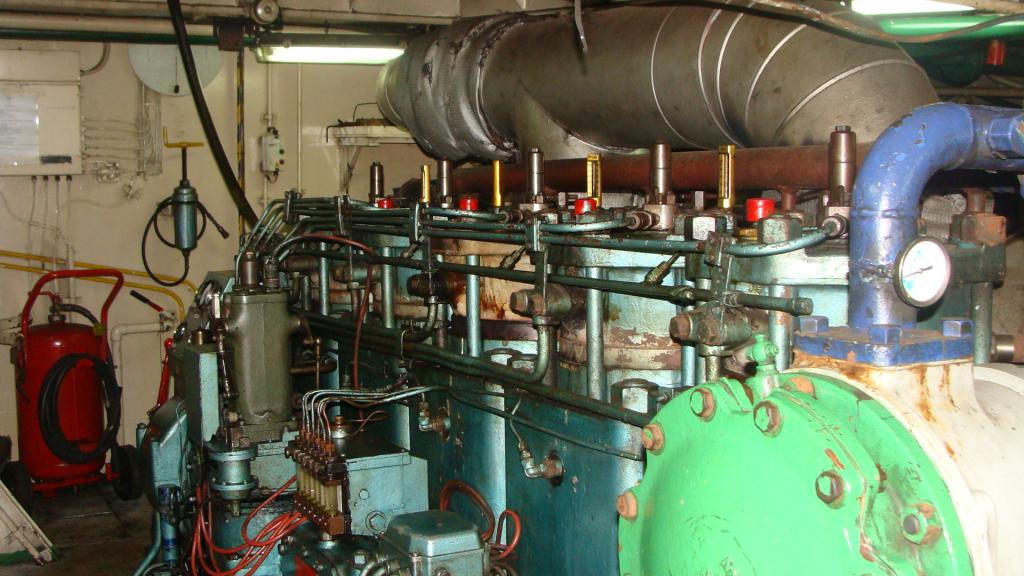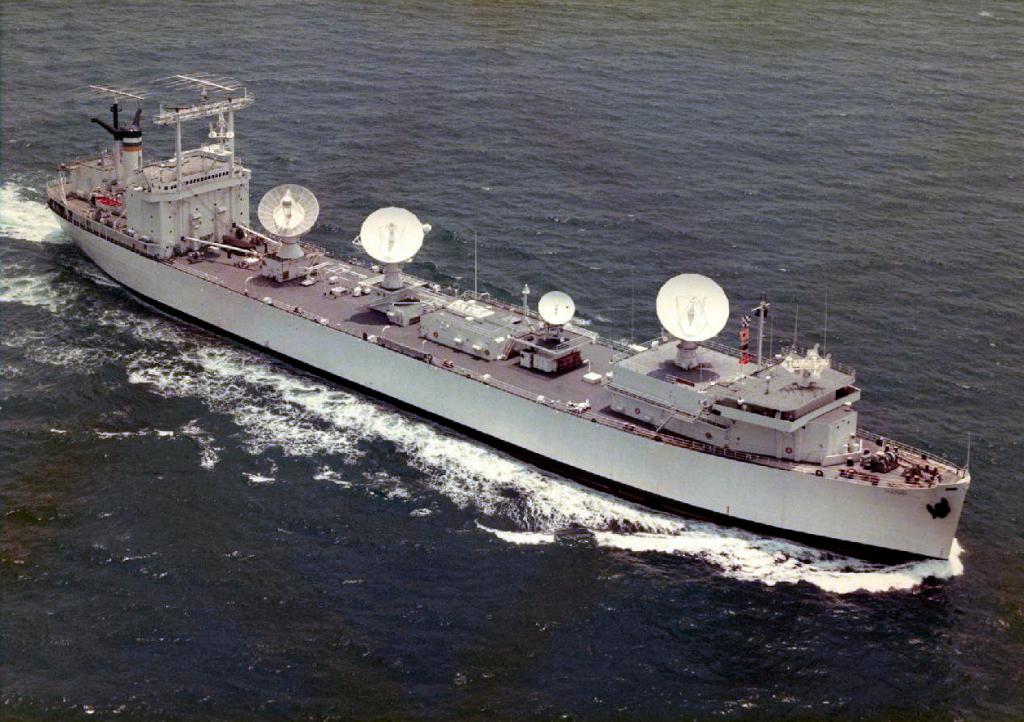As the range of tasks of modern watercraft expands, the responsibility of their electrical supply naturally increases. On - board equipment, equipment and control automation equipment largely determine the safety and operational efficiency of the entire ship. At the same time, the basic requirements for functionality, compactness and ergonomics are preserved. In its current form, marine electrical equipment is an extensive complex of devices and systems that perform a variety of functions.
Features of electrical equipment on boats
The specifics of the use of marine electrical appliances and equipment are determined by special operating conditions. All types of electrical engineering are affected, to one degree or another, by vibrations, temperature changes and increased humidity. In addition, some of the devices operate in conditions of risk of contact with aggressive substances - for example, with oil product vapors from a marine diesel generator and sea salt. Outboard equipment is completely regularly doused with water. And even airborne installations are prone to dew due to condensation. Accordingly, special protection is required for the housings and electrical equipment filling devices.

There are mechanical loads that can complicate the operation of ship systems. Fluctuations transmitted from propellers affect not only the technical condition of the equipment, but also its readings, which is especially important for measuring and navigation devices. Therefore, the hull of marine electrical equipment receives special damping pads that minimize the intensity of vibration. For large installations, shock absorbing platforms are used for the same purpose.
Switchgear
This is the communication basis of any vessel, which connects different types of work units with power plants and auxiliary means of regulation and control. Electricity distribution is carried out by means of special panels for various purposes. These are electrical distribution cabinets that can provide emergency supply, control tasks, maintaining direct current, switching networks, etc. Basically, marine electrical equipment is connected to switchboards with voltage up to 690 V, which support busbar current up to 4000 A. Modern distribution installations also support automated control functions, providing control and protection of systems against short circuits and overvoltages. To control such equipment, special interfaces with programming elements are provided.
Power plants
The entire electrical engineering complex on boats is powered by autonomous energy sources. As a rule, these are diesel generator stations with a capacity of 3 to 15 kW. Also, it does not do without an emergency power supply system of low power, which can serve individual systems for the period of preventive or restoration work. From the point of view of communication, a power plant on a ship is a whole complex of functional units, machines and power mechanisms that provide the very possibility of supplying electricity to various instruments and devices.
Some energy supply projects also include energy conversion options. For example, primary raw materials in different conditions can be processed into heat, steam or electric energy, depending on the current needs of the craft. Marine diesel generators make up the basis of energy needs, but other types of stations are also installed to organize the mechanical drive. For example, steam-powered, steam-turbine, hydraulic and gas-turbine installations can be used to activate the propulsion device and related units .
Lighting devices
On ships mainly special luminaires with fluorescent lamps are used. With their help, in particular, provides general and local lighting in the interior. The characteristics of ship luminaires (SS) are regulated by special regulations for water transport. The average parameters of such a device can be represented as follows:
- Voltage - 127 V.
- Power consumption - 38 watts.
- Efficiency - about 55%.
- Protection class - not lower than IP55.
- Weight - up to 6 kg.
The structural device, in addition to the presence of protective coatings and a metal frame, is not much different from conventional lighting devices. The standard set of SS elements includes a cartridge, starter, grounding screws, electromechanics, ballasts, etc.
Navigation devices
This group of equipment allows commanding staff to navigate the terrain, to lay routes and communicate with other boats. Electronavigation devices include instruments that determine the course and speed of a ship. Among them, one can single out the course autoplayer, autopilot, gyrocompass, electric lag, as well as systems whose operating principle is based on sonar - these are echo sounders, direction finders and locators. The functions of determining the position of a ship in electronic cartography mode are performed by navigation devices like beacons, radars and radio range finders. The entire complex of this equipment is located in the wheelhouse or near it on the bridge. The classic magnetic compass is not a thing of the past . Its presence is important in case of power outages or failure of the main electronic navigation.
Communication Tools
It is vital for the watercraft to maintain the equipment providing internal communication, as well as communication with the shore and other water equipment. As for the internal communication system, it is provided by wired systems and mechanisms. This can be an electric alarm, radiotelephones, telegraphs and pointers. Thanks to these tools, interaction between command posts, utility rooms and duty posts is implemented. Both onboard communications and signaling can be implemented not only through sound messages, but also using optical signals. For example, the light alarm can give watch, emergency and alarm commands.

External communications can also be audible, as well as visual. In particular, the former include whistles, pyrotechnic devices, gongs, etc. Light signals over long distances are given by signal flags and figures. A separate category of external communications is radio communication devices. Today, along with traditional telephones, watercraft are also provided with satellite communications, which allows the use of e-mail and direct voice calls.
Ship climate equipment
Refrigerators, refrigerators and air conditioners are used to create comfortable conditions in cabins and to maintain food safety with some cargoes. Often the engineering complex of this group provides the greatest load on the electric drive of the generator, consuming a total of about 10 kW. Air driers, ventilation devices and cleaning mechanisms that are used to regulate the microclimate in household, cargo and residential premises belong to the same category of units.
Automatic control systems
Automation tools are fully or partially integrated into the general electrical engineering complex. Such devices, in particular, make it possible to control the executive bodies of the engine room, an electric drive with a generator station, cargo mechanisms, loading and unloading equipment, emergency warning systems, etc. Moreover, control and monitoring is carried out in accordance with a predetermined algorithm without the direct involvement of operators with free service.
The latest automation tools are based on the coordinated work of controllers and sensors that track a variety of vessel parameters - from temperature indicators to the state of the power unit. To control the algorithms, computer interfaces are more often used. Due to the complexity of modern marine electrical equipment and automation, the construction of the controller architecture is carried out in an individual design format. The technical capabilities, resources and communications of the watercraft, which will ensure the management of critical nodes through an automated system, are taken into account.
Equipment operation
Only persons with appropriate training and qualifications are allowed to work with electrical devices. The list of duties of a ship electrician includes diagnostics, maintenance and repair of equipment, assemblies and devices, one way or another connected with on-board wiring. On operator and dispatching consoles, the parameters of electronic components and electrical circuits are monitored, adjusted and, if necessary, adjusted. Special attention is paid to the operation of network protection systems against overloads and overheating.
Repair of electrical equipment on board
Repair measures can be planned and unscheduled. Minor preventive and recovery operations are carried out without a project. This may be replacing the consumable, installing new electrical hardware or updating worn insulation. However, the installation of new automation or repair of the generator by a ship electrician is carried out in accordance with the technical documentation prepared by the senior engineer. An electrician himself can give recommendations to work crews when performing complex installation operations associated with welding electrical activities - for example, when applying anode anticorrosion coatings or sealing cable routes with casting compounds.
Conclusion
Marine electrical engineering is organized in accordance with technical requirements that affect safety, ergonomics and operational efficiency. But, with the development of technology, approaches to building electrical and automatic infrastructure are changing. Today, ship electrical equipment can no longer be imagined without elements of digital support, capacious batteries and the latest lifting mechanics, which displace similar means of the previous generation. At the same time, the universal principles of the organization of electrical engineering are preserved. These include ease of use, functionality and a high degree of maintainability, which is very important in the open sea.